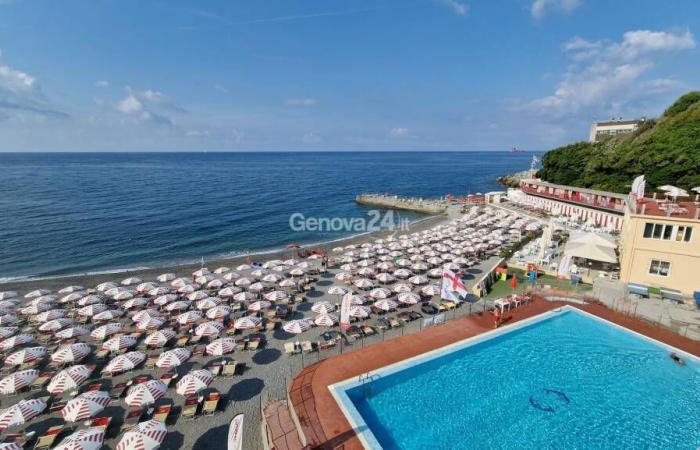Genoa. In Liguria the beaches – that is, the coasts low and sandy – represent only a third of the entire coastal extension and measure approx 120 linear kilometerswith an average depth among the lowest in Italy, equal to 26 meters. It follows that the overall surface area of the Ligurian beaches is more or less equivalent to that of the entire municipality of Portofino. These are the data that emerge from the renovation Ispra census on the beacheswhich this year updates and integrates the 2020 coastal data, completing the information already processed in recent years for the coastline and the backshore line.
The beaches of Liguria represent only 2% of the total surface area occupied by beaches in Italy. The latter, in turn, measures less than the territory of the municipality of Ostia alone, in Rome: 120 square kilometers, a surface that includes the large beaches of Rimini or Locride, up to the small and suggestive ones pocket beach between the cliffs of Asinara or the little beaches that survive between the ports, the seafronts or the artificial reefs in front of our seaside cities. On average, Italian beaches are approximately 35 meters deep, and occupy approximately 41% of the coasts, or approximately 3,400 kilometres, out of a total of more than 8,300 kilometres.
“The distribution of surface area by length of coastline occupied by beaches is not at all uniform between the various regions. It is those in the south and the larger islands that make up over two thirds of Italian beaches, while regions such as Liguria or Emilia-Romagna find themselves having to manage one relatively small resource – explains Ispra -. The conditions do not change much if we consider the values of the surface of Italian beaches, with the southern regions worth half of the national surface and Calabria which, alone, is worth 20% of the total. The comparison between the two values (occupied coast and surface area) does not match because the conformation of the territories generates beaches of very different depths: the Adriatic beaches, in fact, are generally the deepest, with those of Veneto on average 67 meters deep and those of Emilia-Romagna 72 metres, approximately triple the values of Liguria ( 26 metres) and Sardinia (22 metres)”.
The monitoring of Ispra takes on particular interest in the topic of beach concessions. At a regional level, in fact, the discrepancy between the geological notion of “beach” and the parameters considered for the application of the 2008 regional law, the one that requires municipalities to use the 40% of the coastline has free or free equipped beaches. In fact, they are also included in the count cliffs and platforms, provided they have suitable access for bathing. According to Legambiente data almost 70% of the Ligurian beaches proper are under concession to a bathhouse.
But not only that. To contest the application of the Bolkestein directive, which prescribes putting state maritime property concessions out to tender, the seaside associations refer to the data from a mapping launched by the Government and sent to Brussels. According to the estimates of the technical table, the maritime state property in Italy has a surface area of 381 square kilometers (but this data also includes ports, airports, parks and industrial areas) of which 127 square kilometers are occupied. Based on this ratio it was calculated that only 33% is under concession and therefore the beach resource would not be “scarce”, thus lacking the basic requirement for compliance with the directive. But the calculation, as mentioned, does not only take into consideration the beaches. AND the Ispra report confirms that beaches are a rare commodity, especially in a region like Liguria.
Moreover, at the beginning of May also the State Councilruling on the appeal of a bathing establishment in Rapallo, contested the alleged “non-scarcity” of the beaches asserted by the Government and reiterated that the concessions must be put up for tender immediately, without further extensions, in application of European law.
Ispra monitoring on the coastline
Ispra publishes on its coast portal the geographical database of the elements that make up the coastal structure, now integrated with the beach component. Each beach element is accompanied by a series of information designed for this purpose, beyond the characteristics of geometry, surface and occupied stretch of coast; those selected for the current investigation concern the type of substrate, the presence of works linked to seaside tourism and information to support studies regarding biomass accumulations, closely linked to the natural protection of beaches. This data can also be consulted with an interactive map.
This year, useful elements have been added to support the sustainable management of beaches and to combatcoastal erosion and the effects of climate changes. One of these elements concerns the lithology of beaches (sand, pebbles) with a renewed characterization, today defined as “substrate type” as it was found that approximately 1% of the polygons is in fact made up exclusively of accumulations of biomass, with the base resting right on the seabed. These accumulations can consist of banquette of beached posidonia or other plant materials (logs, reeds) which, when not eliminated, can constitute an element of “elasticity of the beach” which protects it against the action of sea storms.
For these surveys, mainly theand satellite and photographic images from Google Earth. The aim was to define the presence of biomass accumulations in the period between 2016 and 2024. It emerged that in approximately half of the Italian beaches there are at least traces of such accumulations (53%), in a quantity that tends not to be constant but disappearing or perhaps increasing from one season to another and from one year to the next.
For the most recent survey available, with sufficient clarity of the images, a qualitative analysis was carried out on the portion of the beach covered by these accumulations; taking only the most recent date as a reference, the presence of traces of biomass accumulations drops to 35% of Italian beaches, while for 15% of cases larger portions of beach surface coverage are detected (over 20%).






